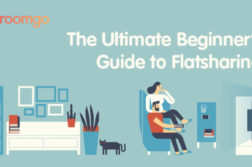When you’re looking for a room, it’s easy to get carried away by your need for somewhere decent to live. You’re likely to be asking: What state is the property in? Is the room big enough for me and all my stuff? What are the flatmates like? Am I going to be able to get on with them, enough to share a bathroom and a kitchen, or will I have to hide in my room? How far is it from the nearest public transport/ supermarket /pub?
Your first viewing may come and go in a rush of excitement, if the place and the people meet your expectations, and it’s affordable. But before you jump in, there’s something else you should be asking: What kind of contract am I being asked to sign?
There are 3 types of contract you’re likely to come across when flatsharing in the UK. It’s good to be aware of the pros and cons of each before you sign. We explain them briefly here – more information can be found on the housing charity Shelter’s website :
Individual AST
The AST or Assured Shorthold Tenancy is the standard contract in today’s private rented sector. If you are presented with one of these, you get some rights, and with those rights come responsibilities. If only your name is on the tenancy agreement, you are only responsible for your portion of the rent. Even if you live in a shared house with 2, 5 or 10 others, the landlord can’t chase you for rent owed by anyone else. Your agreement is likely to cover exclusive use of your room, and shared use of the common areas (hallway, bathroom, kitchen, garden), and you’ll have a fixed period to stay before either side can give notice (6 months).
Joint AST
Common in student lettings, a joint AST is often used when you hook up with a bunch of others to rent a property together. Unlike an Individual AST, all of your names will be on a single tenancy agreement, and if one of your other flatmates doesn’t pay their share of the rent, the landlord could come after you to pay the outstanding amount. For this reason, it’s best to enter into these kinds of agreements only with people you know to be responsible. If you’re not sure what kind of AST you’ve got, look for the words ‘joint and several’. If you see this phrase, it means you’re likely to be liable if someone else doesn’t pay the rent. As with an individual AST, you’ll have rights and responsibilities, including a 6 months fixed tenancy before either side can give notice to leave.
Licence
When renting a room in someone’s home, you probably won’t get an AST. A licence is typically used in this situation, as you will effectively be a lodger rather than a tenant. A licence doesn’t give you exclusive use of your room (although your landlord shouldn’t simply march in without asking). You’ll have fewer rights than a tenant with an AST, but also fewer responsibilities. You won’t be tied to a long notice period, but you could be asked to leave with just a couple of weeks’ notice. If you don’t pay the rent on time, it’s likely you’ll be looking for a new home pretty quickly.
If you’re offered a licence for a room where the landlord doesn’t live in the property, it’s likely that they’re not doing things properly – insist on an AST or say ‘no, thank you’ and look for a place where the right contract is on offer.






